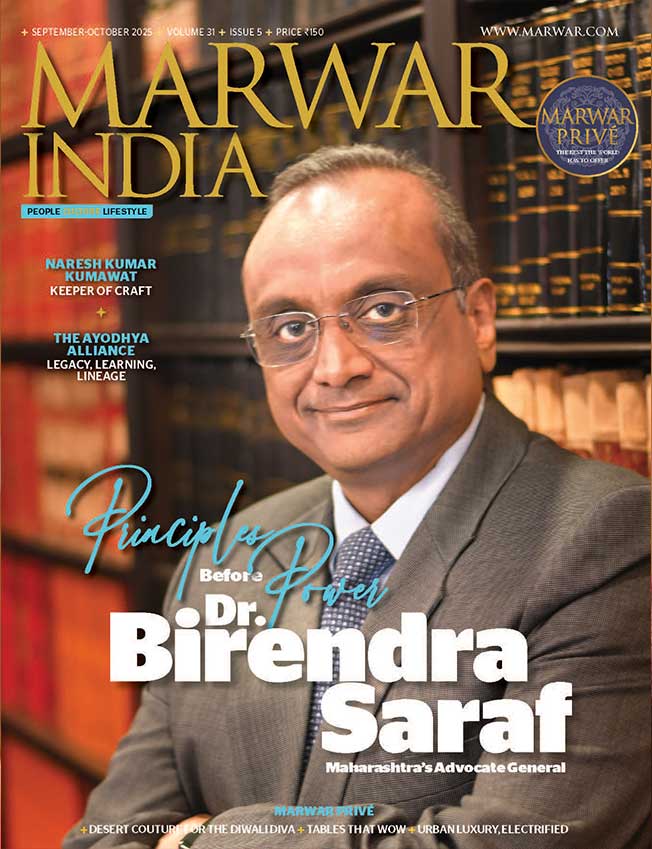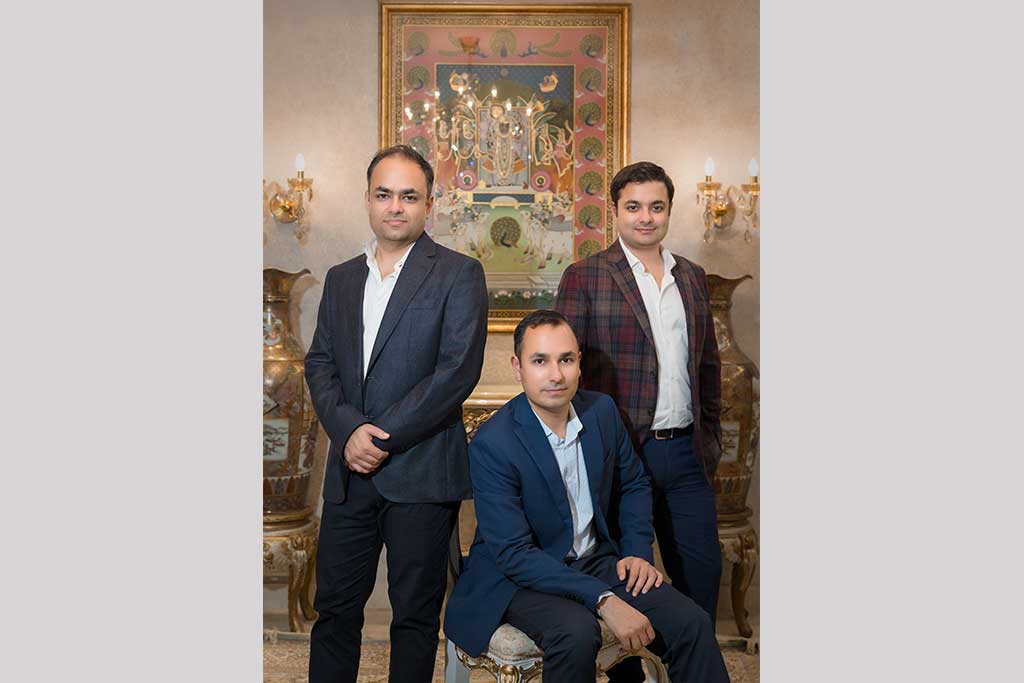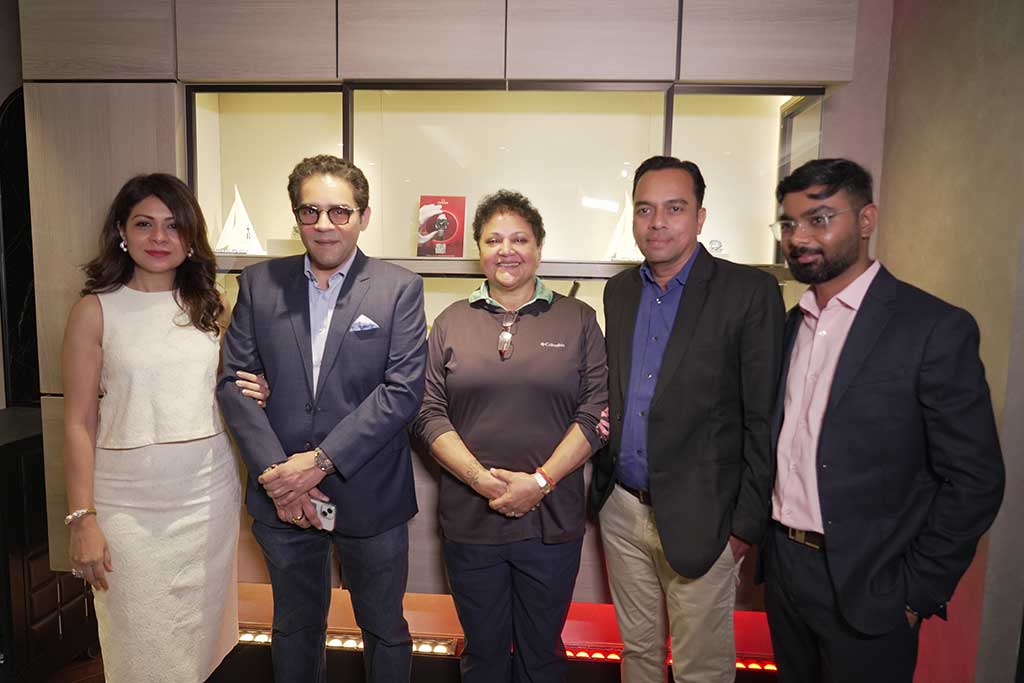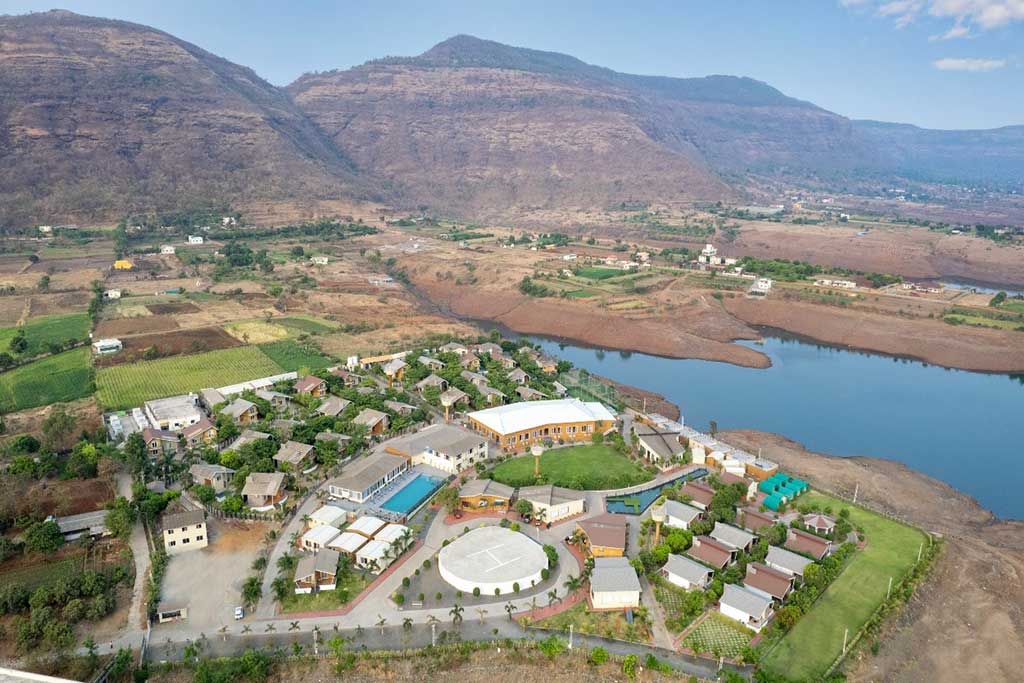The musical tradition of the Marwar region encompassing Jodhpur, Jaisalmer and Barmer is embodied in the Manganiyars. For this clan of hereditary folk musicians, music is more than a means of livelihood. The Manganiyar community reflects the roots of Indian classical music.
It is past 2.00 am and the goats have finally stopped bleating. As a bunch of us sit on charpais under a starry sky in a tiny village called Hameera, 25 km off Jaisalmer, Sakar Khanji asks a young lad to fetch his 250-year old kamaicha (percussion).
Over the next hour and more, we are treated to an unforgettable rendering of this ancient string instrument by its seniormost living maestro who also happens to be a Padma Shri awardee! He starts with one or two popular songs and then cajoles his kamaicha to imitate the soundscape of a train swiftly passing through the desert followed by the train’s slowing down and its eventual halt. There is no other accompaniment of voice or percussion to his rendition and yet such is his artistry that the stillness of the night is enveloped by the apparent whistle of a halted train. At a time when most of the village folk were yet to see a train, let alone ride one, they would get together to experience its arrival via Sakarji’s kamaicha!
My being left spellbound is hardly surprising. Sakarji hails from the Manganiyar community; a community that has wowed audiences all over the world with their live wire, spontaneous performances that are deeply rooted in ancient folklore and narrate the stories of Rajasthan in an inimitable, colourful manner.
Having known the most celebrated of them personally, visiting their homes and villages and understanding their music and art for over two decades, I am certain of the fact that there is much more to the Manganiyars than meets the eye.
A peek into the patronage
Spread all over Western Rajasthan in Jodhpur, Jaisalmer and Barmer, the Manganiyar is a tightly knit musical community and a shining example of the informal patronage tradition or jajmani pratha of these regions. The jajmani pratha is at least 500 years old and continues to be prevalent till today. It is estimated that there are anywhere between 25,000 to 30,000 Manganiyar artistes today, each of them having anywhere from 25-30 patrons. These Manganiyars are entrusted with the tall task of maintaining their patron’s genealogical history up to 20 or even 25 generations.

They gather in groups at the patron’s residence on all special occasions such as births, marriages, festivals and even deaths, to sing and narrate the entire genealogy in the form of a song called subhraj. It is believed that whilst the subhraj is sung for the wellbeing wellbeing of the family, the bakhaan is sung essentially in praise of the jajman and his family.
What is even more astounding is that the entire history is learnt and passed on generation after generation, orally. This becomes possible because right from his boyhood days, a young Manganiyar child starts going to the jajman’s house with his father and other community members and picks up the words and the history through a process of continuous oral transmission and osmosis. The jajmans, on their part, not only take care of the Manganiyars year after year, through thick and thin, but also reward them richly on special occasions with cash, a piece of land, gold, ornaments, and other gifts that may include camels, goats, horses or even food grains like jowar and bajra.
There is another aspect of their symbiotic relation that is rather remarkable. Whilst all the Manganiyars belong to the Mirasi sub-caste and are Muslims, their jajmans have traditionally been Hindu Rajputs of Kshatriya descent. Some even belong to the Bhati clan and are worshippers of Lord Krishna. Many Manganiyars, particularly those from the village of Baiyya, therefore sing Krishna bhajans very fondly.

Mesmerising the audience
What is it that makes these musicians so popular outside of their patrons—their jajmans? The reasons are manifold. Unlike Indian classical artistes, they do not undergo a formal taleem or follow a guru-shishya parampara. Their process of learning is entirely organic handed down to them generation after generation through an oral tradition. They are hereditary musicians, who, right from birth, absorb not just the songs but even the folklore and literature that their mothers sing whilst performing mundane chores such as cooking, cleaning, fetching water, tending to crops, sowing or harvesting or taking the cattle out to graze.
From a young age, Manganiyars participate in all-night singing sessions that the community holds for themselves as well as for their patrons on special occasions. The children are encouraged to sing along in groups without inhibition, try their hands at instruments such as dhol or khartal and learn to enjoy spontaneous expression. Many of the vocalists are therefore adept instrumentalists too and vice versa.
It is no wonder, then, that Manganiyars grow up to be artistes who sing full throated without the slightest tinge of stage fright—whether they are performing at the opulent Umaid Bhawan, The Rambagh Palace or august gatherings at Lincoln Center, Carnegie Hall, Kennedy Center or the Royal Festival Hall in London, the Paris Opera or the Kremlin in Russia. Most Manganiyars also enthral their audiences with Sufi kalaams of Baba Bulleh Shah, Mirabai, Shahbaz Qalandar and Kabir at much awaited festivals.

Glory on the global map
“Besides their God-given sense of sur, the Manganiyars also have an extraordinary sense of rhythm,” opines Kuldeep Kothari, Secretary of Rupayan Sansthan. According to him, it is because of their inborn sense of rhythm that the Manganiyars have successfully collaborated not just with other Indian folk music traditions such as Baul of Bengal or Carnatic music of Southern India but also with global sounds—be it the Flamenco of Spain or in productions like Manganiyar Seduction by Roysten Abel.
Kuldeepji should know. His father was none other than Komal Kothari, who was affectionately referred to as an encyclopaedia of Rajasthani lok sangeet by even the most learned scholars and musicians. It was all thanks to the duo of the storyteller Vijaydan Detha and the lok sangeet aficionado Komalda that Manganiyars along with musicians from other Rajasthani communities such as Kalbeliyas, Langas, Bhopas and Meghwals, first started performing on stage, outside Rajasthan, and eventually outside India. Until then, most of these artistes had never used microphones and their musical performances were limited to their own or at the most their neighbouring villages. “One of his foremost contributions to Rajasthani folk has been the colossal recording and documentation of the folk repertoire, which my father achieved by travelling to and covering about 30,000 villages of the state,” claims Kuldeep. All this was done on spools which the doyen’s son is now in the process of digitising.
A repertoire of music
The Manganiyar artistes have come a long, long way. A large section of them have performed and travelled all over the world and have left audiences—who do not follow even a word of their vocabulary—utterly mesmerised with their energy, the catchiness of the compositions and, of course, their virtuosity. Many have also been richly recognised. The late Sakarji was one of the first instrumentalists to receive a Padma Award in 2012. Recently, one of their most beloved vocalists, Anwar Khanji, who has performed in 55 countries worldwide but remains as grounded as ever, was honoured with a Padma Shree at Rashtrapati Bhavan. A wizard with the clapper instrument called khartaal, Gazi Khanji from Barna village in Jaisalmer has been the recipient of Sangeet Natak Akademi Puraskar in 2018. Artistes like Mame Khan from Satto village in Jaisalmer and Swaroop Khan from Barmer have done playback singing for films. Mame Khan has also been the first Manganiyar to have walked the red carpet at Cannes Film Festival in 2022.

Manganiyars open their performances with the colloquial greeting of khamma ghani which has come to denote warm greetings but was originally meant to honour the bravado of Bappa Rawal Khumaans who drove away Arab invaders way back in the 17th century. On stage in groups of 5-6, all artistes give vocal support in the chorus and crescendo though there may be only 1-2 lead vocalists. The others embellish the compositions with traditional Rajasthani folk instruments that include dhol, dholak, khartaal, kamaicha (percussion), sarangi, ravanhatta (string) and algoza and morchhang (wind).
Deeply connected to the ecology of the desert and inspired by nature, their vast repertoire calls out to the Lord of rains, Indra, celebrates the change of seasons, and welcomes migratory birds besides hailing local deities, pirs, fakirs, gods and goddesses. At other times, their rustic voices drift across dunes singing timeless love ballads such as Dhola-Maru.
Vinod Joshi, Director of a popular folk festival called Momasar Utsav, and someone who has been associated with lok sangeet for a long time, summarises it all quite well. “Manganiyar music sensitively portrays every aspect of Rajasthan’s traditions, its culture, and its beliefs. It is a musical representation of our way of life. Also, since it is as simple as it is deep, it instantly finds a place in the hearts of its listeners, anywhere in the world.”
We are listening.
Recent Posts
Discover Your Perfect Honeymoon in the Maldives
For Indian couples embarking on their journey of togetherness, the Maldives has long held an almost mythical allure - a tapestry of turquoise
Jewels Fit For Generations : The Nemichand Bamalwa Story
Since 1987, Nemichand Bamalwa Jewellers has been more than just a name; it is a legacy of trust, craftsmanship, and innovation.
Welcome to "What's Your Plan?"
This vibrant social hub by DJRS Hospitality blends chic vibes with gourmet bites,
Rajasthan’s Crafty Fashion Takeover
Rajasthan, India’s desert jewel, is a repository of exquisite and time-honoured crafts.
‘Mercii’ Beaucoup, Mumbai!
Stepping into Mercii at 81 Crest, Khar, feels like entering a world where gratitude is plated with every exquisite bite.
Game. Set. Watch: Omega Celebrates Smriti Mehra
Luxury Watch Boutique Time Avenue, Mumbai, in collaboration with Omega, hosted a special event to honour none other than Smriti “Simi” Mehra,
Sand, Sea & Sky - High Thrills
Whether you’re soaking in serene natural beauty or diving into extravagant fun, the UAE offers the perfect setting for an unforgettable family getaway.
Dr. Anuja Luniya Shows You How to Stress Less, Live More
Meet Dr. Anuja Luniya, physiotherapist by degree, stress strategist by passion, and your go-to guru for turning everyday chaos into calm.
Breitling's 140th-Anniversary Vintage Watch Exhibition: An Unmissable Showcase
The Breitling Heritage Exhibition, a remarkable showcase of the brand’s most iconic timepieces from its 140-year history, has been on an extensive global tour with 55 stops across four continents.
Dawn to Dusk with Sidhart Pansari: Steering Primarc's Legacy into the Future
We follow the dynamic director of the fastascendant Primarc Group
4 Perfect Getaway Resorts Near Mumbai
For those looking to break away from the urban bustle, India's hidden nature
48 Hours In Canberra
Canberra is a vibrant city with a rich culture, awe-inspiring natural landscapes, adventure-filed activities, and hospitable locals.
Understated Power
In the charming town of Shillong, Meghalaya, golf is more than just a game—it's a family affair for Gaurav and Lakshya Bajaj.
Understated Power
The Lexus LX500d is a rare sight on the roads, and this exclusivity is where its distinctive charms resides.
The Money Manager
Engaging young, ambitious, tech-savvy successors to manage family wealth is a rising global need among the super-rich.



















